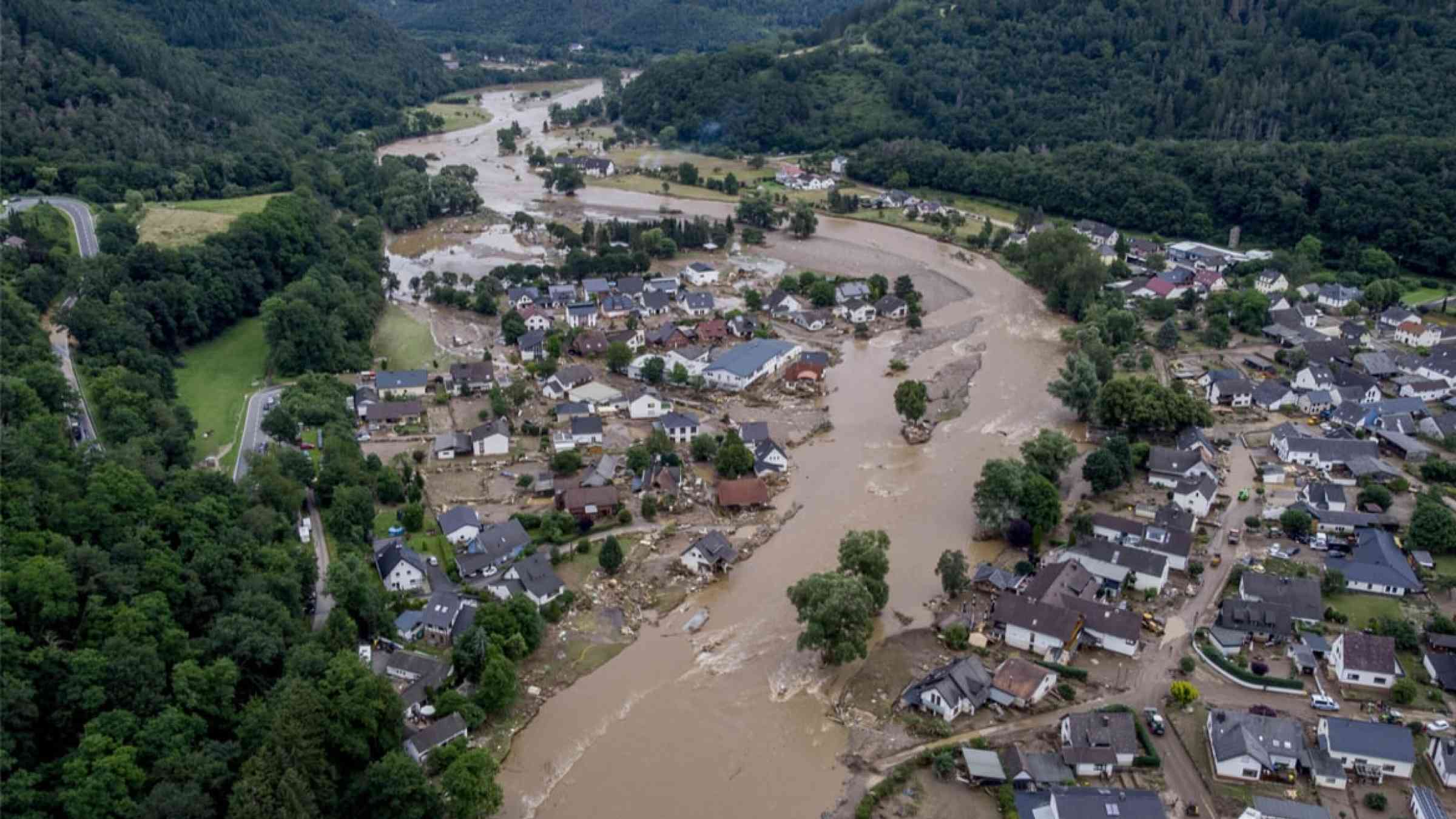Climate change and high exposure increased costs and disruption to lives and livelihoods from flooding associated with exceptionally heavy rainfall in Central Europe

In mid September 2024 a very large region in Central Europe, including Poland, Czechia, Austria, Romania, Hungary, Germany and Slovakia experienced very heavy rainfall, breaking local and national rainfall records over the period of four days.
While the rain was extremely heavy in many locations, the extent of the event, stretching across many countries, was exceptional. Almost two million people were directly affected by the flooding caused by the extreme rainfall (blue News, 2024). The most severe impacts in urban areas were in the Polish-Czech border region and Austria (The Guardian, 2024). At the time of writing at least 24 people lost their lives (The Guardian, 2024; BNN, 2024; CBS, 2024) with several persons still missing several days after the event in Czechia (DW, 2024). All countries were affected by power cuts, leading to schools and factories closing as well as hospitals.
To assess to what extent human-induced climate change altered the likelihood and intensity of the heavy precipitation leading to the severe flooding, researchers from Czechia, Poland, Austria, the Netherlands, Sweden, France and the UK undertook an attribution study on the event.
To capture the impacts associated with the very large-scale event, we focus the main analysis on a large region (10.7°E, 24°E, 46°N, 52.3°N), encompassing Czechia, Slovakia, Austria, parts of Poland, Germany, Romania and Hungary. For the temporal extent we focus on the four most impacted days, which occurred from 12th to 15th of September, and use the maximum 4-day annual rainfall (RX4-day) as the index to analyse. We note that the results are not sensitive to the exact number of days assessed.
Main findings
- The intensity and duration of the heavy rainfall put immense pressure on civil protection. Emergency management systems across Europe had been reinforced after severe flooding over the last decades and largely worked well: despite the higher intensity and larger scale, the number of fatalities is lower than in earlier floods with 24 estimated at the time of writing, compared to e.g. 232 in 2002 when flooding affected Germany, Austria, Czechia, Romania, Slovakia, and Hungary and at least 100 in 1997 when only Germany, Poland and Czechia were hit by floods. They are also much lower than in the Western European floods in 2021 when over 200 people lost their lives.
- The heavy rainfall was caused by a Vb depression, which forms when cold polar air flows from the north over the Alps, meeting very warm air in Southern Europe. Vb depressions are rare, but usually associated with heavy rain over Central Europe. Analysing analogous weather systems in the observed record suggests that there is no robust change in the number of analogous Vb depressions since the 1950s.
- The frequency is not the only characteristic of Vb depressions that could potentially change in a warming climate, other drivers of rainfall can change and affect likelihood and intensity of the overall rainfall analysed in the remainder of this study. In today's climate, which is 1.3°C warmer than at the beginning of the industrial period, a rainfall event of this magnitude is a very rare event expected to occur about once every 100 to 300 years. As the event is by far the heaviest ever recorded, the exact return time is difficult to estimate based on only about 100 years of observed data. We use a 100 year return-time for the rest of analysis.
- To assess if human-induced climate change influenced the heavy rainfall, we first determine if there is a trend in the observations. When looking at the regional-scale described above, heavy four-day rainfall events have become about twice as likely and 20% more intense since the pre-industrial era. The estimates become more uncertain when looking at more local scales, and are limited in places in some of the observed data.
- To quantify the role of human-induced climate change on this increase, we analyse climate models that are able to simulate heavy rainfall in the area and combine these with the observation-based assessment. All models show an increase in intensity and likelihood as well, as expected from physical processes in a warming climate. The combined change, attributable to human-induced climate change, is roughly a doubling in likelihood and a 7% increase in intensity. The models are however not explicitly modelling convection, and new convection-permitting studies have shown that increases in precipitation may have been underestimated in lower-resolution climate models. Therefore, these results are conservative.
- Under a future warming scenario where the global temperature is 2°C higher than pre-industrial levels, climate models predict even heavier 4-day rainfall events, with a further expected increase of about 5% in rainfall intensity and a further 50% increase in likelihood compared to present day. Again, these numbers are probably too low, due to the underestimation of very heavy rainfall in available climate models.
- The areas affected by the floods, notably in sprawling urban centres along major rivers, had been identified as highly vulnerable to flooding. These regions include Nysa and Wroclaw in Poland, Bratislava in Slovakia, the eastern regions of Galati and Vaslu in România, lower Austria and Vienna, as well as Ostrava, Opava, Krnov, Jeseník and Litovel in Czechia. Infrastructure and emergency management systems built after lessons learned from previous floods have been severely tested and in many cases overwhelmed by the sheer magnitude and scale of these floods, leading to damages that are estimated to several billion Euros.
- These floods were well-forecast and the death toll is considerably lower compared to the 1997 and 2002 floods, pointing to the effectiveness of investments made in forecasting, early warning systems, and forecast-based action including evacuations, flood defences and pre-emptive water reservoir releases. However, any loss of life underscores the need for further enhancements to account for climate change in enacting flood defences at scale, and improving risk communication and emergency response plans.